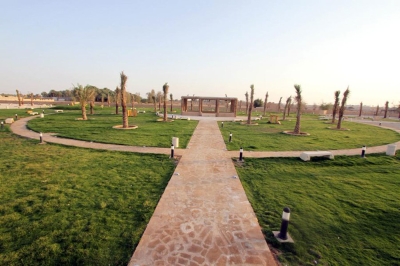
The Plaster Mural is an ancient colored plaster panel with a yellowish background, discovered in the archaeological Qaryat al-Faw, the capital of the first historical Kingdom of Kinda. It is located southeast of Wadi ad-Dawasir Governorate, in Riyadh Province, in the Kingdom of Saudi Arabia. The plaster mural features decorations consisting of an image of a man with thin, long mustaches and bulging eyes. His head is crowned with a wreath, and a vine branch is positioned above him, with a cluster of grapes hanging from it. To the left of the face is the upper half of a man's body with a round face, wearing a garment with widely spaced vertical folds on his chest. Drawings of vine leaves appear above the man's head and beneath his left hand. A thick red line runs across, with letters written in Musnad script.
The length of the plaster mural is fifty-three cm, and its width is thirty-six cm.
History of the plaster mural
The plaster mural dates back to the period between the third century BCE and the third century CE. It is preserved at the National Museum in Riyadh and is registered under the number 2182.
Significance of the plaster mural
This artwork stands out for its symmetrical composition, with the artist excelling in emphasizing the central theme of the mural, which is coronation. The mural showcases a variety of stylistic features of the painting art in Qaryat al-Faw, particularly the tendency to intensify decorative elements, especially plant motifs. A relatively large space is allocated for the vine leaves and grapes, highlighting their importance in the mural's central theme. This mural is also distinguished by the artist's skill in capturing and reflecting light, clearly visible on the grapes.
Related quizzes
Related articles

